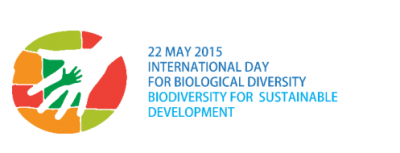


Each year, on 22 May, ‘biological diversity’, or ‘biodiversity’, is celebrated by international organizations along with research institutes, universities, schools and even individuals around the world.
As we celebrate the 2015 International Day for Biological Diversity, here we look at some IAP projects that touch on the theme.
First – and perhaps most directly – on 13 April this year, our regional network for Europe, EASAC, released its report on ‘Ecosystem services, agriculture and neonicotinoids’.
Neonicotinoid insecticides have raised controversy in Europe as their use as a prophylactic seed dressing on a wide range of crops has been linked with unintended effects on non-target insects such as honeybees and other pollinators – a controversy that culminated in a three-year EU-wide ban on certain uses of this group insecticides (For example, see McGrath, 2014: Politics meets Science: The case of neonicotinoid insecticides in Europe.
The EASAC report examines the scientific evidence on the impact of neonicotinoid insecticides – and highlights the increasing evidence of their negative effects – not only on honeybees, but on wider ecosystem services in agriculture, such as crop pollination by bumblebees, solitary bees and other insects, as well as the valuable pest-control services provided by predatory and parasitoid insects.
Likewise, ecosystem services feature heavily in a report, ‘Urban Water Challenges in the Americas’, published by the IAP regional network for the Americas, IANAS, in March 2015.
As José Galizia Tundisi, International Institute of Ecology, São Carlos, Brazil, points out, urban areas have disrupted natural environments, making cities dependent on resources such as water, food, fibres and timber that are brought in from well outside the urban area. “It is essential to restore urban ecosystems,” says Tundisi. “Green cities must build up, protect and promote natural parks, riparian forests and wetlands, clean rivers and lakes in order to provide sites for education and water resource conservation, restore urban biodiversity and reconnect people with nature. “Restoration of nature in the cities,” he continues, “will promote healthy, attractive urban environments, improve the quality of life and provide better opportunities for employment and education. The water cycle in this context is of extreme ecological, economic and social importance.”
Finally, as the global community increasingly tackles issues such as biodiversity loss, climate change, population growth, etc, there is a need for our children and youth to develop an understanding of and appreciation for science. It is no secret that many children are turned off studying science because of the way it is traditionally taught. To counter this, the IAP Science Education Programme is promoting inquiry-based science education (IBSE).
‘Working with Big Ideas of Science Education', also published in March 2015, addresses concerns that the science curriculum in many countries is over-detailed and frequently accompanied by assessment that requires memorising multiple facts. The book provides a reasoned response to this situation by expressing the goals of science education in terms of a relatively small number of powerful ideas – called ‘big ideas’ because they explain a range of related phenomena and events. Among these ‘big ideas’ is that: ‘The diversity of organisms, living and extinct, is the result of evolution’. “All life today is directly descended from a universal common ancestor that was a simple one-celled organism,” reads the text. “Over countless generations changes resulting from natural diversity within a species lead to the selection of those individuals best suited to survive under certain conditions. Species not able to respond sufficiently to changes in their environment become extinct.” Evolution, therefore, provides the theoretical basis for biodiversity, while the interactions of multiple species in an ecosystem provide the services we require – whether clean water or healthy food – to survive.
There can be no better reason to celebrate the International Day for Biological Diversity. We hope, too, that IAP reports such as those highlighted above will contribute to the sustainable development of our societies as well as the sustainable use of our valuable natural resources.
Peter McGrath, IAP Coordinator, 19 May 2015
